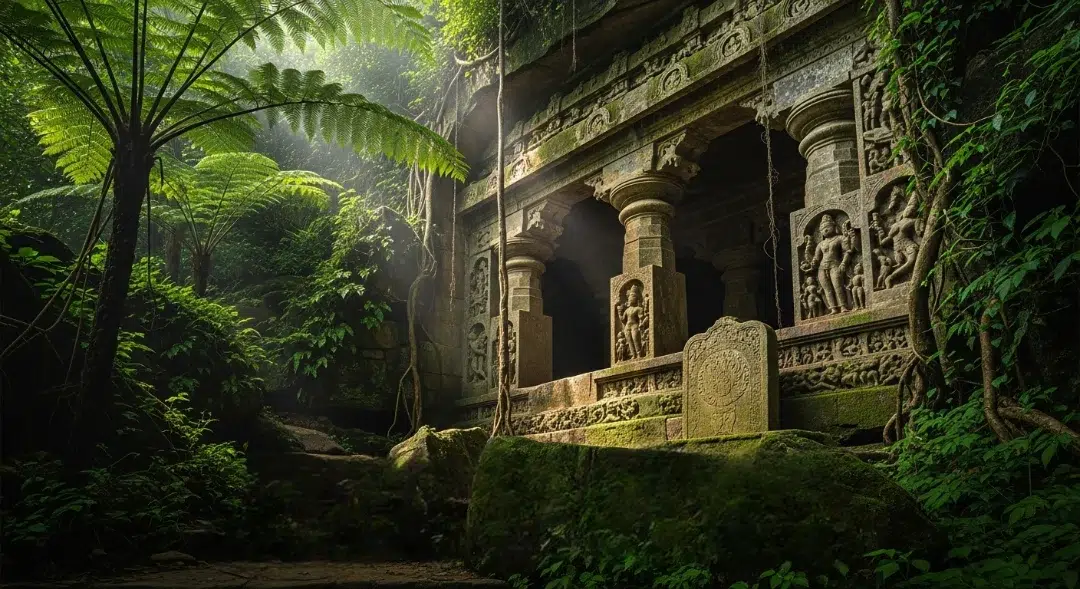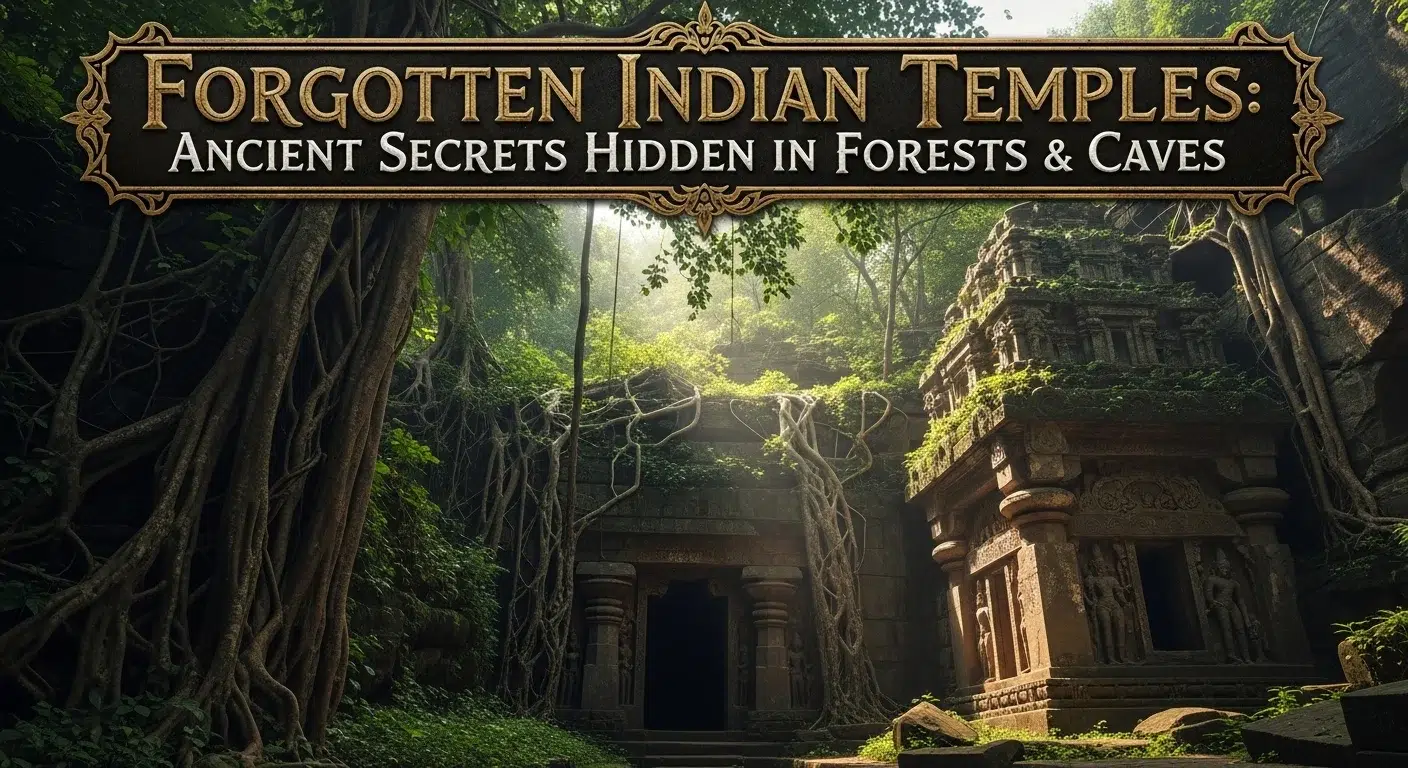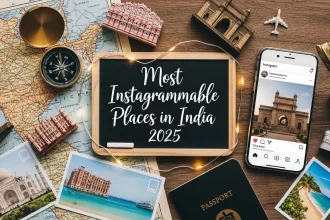Introduction: Discovering India’s Hidden Heritage
Beyond the well-trodden paths to famous temples like Khajuraho and Konark lies a different India – one where ancient stones whisper secrets in forgotten forests and hidden caves. These forgotten Indian temples represent some of the country’s most fascinating archaeological sites, offering intrepid travelers a chance to connect with history in its most authentic form. As we look toward 2025, there’s growing interest in offbeat travel experiences that combine adventure, spirituality, and historical discovery. This guide unveils 10 such remarkable temples where nature and architecture merge to create truly magical experiences.
Why Explore These Forgotten Temples in 2025?
The year 2025 presents unique opportunities for exploring these hidden historical places. Improved digital mapping and better connectivity to remote areas make previously inaccessible sites more reachable. There’s also growing awareness about sustainable tourism and preserving lesser-known heritage sites. Visiting these temples offers:
-
Crowd-free experiences unlike popular tourist destinations
-
Unique photography opportunities in pristine settings
-
Authentic spiritual encounters in undisturbed environments
-
Adventure tourism combining history and exploration
-
Support for local communities in remote areas
The 10 Hidden Temple Treasures of India
1. Jogimara Cave Temple, Chhattisgarh: The Ancient Theater Cave
Nestled in the Ramgarh hills, this prehistoric cave temple offers a rare glimpse into ancient performance traditions and early spiritual practices.
- The Secret: Dating back to 300 BCE, Jogimara is considered one of India’s oldest cave theaters. It was abandoned when Buddhist monastic complexes declined in the region, eventually being reclaimed by the forest.
- Architectural Marvel: Features natural cave formation enhanced with carved seating arrangements and ancient Brahmi inscriptions. The cave’s acoustics demonstrate sophisticated understanding of sound engineering.
- The Journey: Moderate 3 km trek from Sita Bengra cave through dense forests. Nearest town Ramgarh is 15 km away with basic accommodation options.
- Best Time to Visit: October to March when weather permits comfortable exploration and clear pathways.
- 2025 Update: ASI has installed protective grilles and informational signage. New digital mapping available through state tourism app.
- Local Lore: Legend says the cave was used by celestial dancers (apsaras) to entertain gods. Local tribes believe the cave’s echoes contain ancient magical chants.
- Visitor Tips: Hire local guides from Ramgarh village. Carry powerful torchlights and wear sturdy trekking shoes. Best visited during daylight hours.
2. Masanagudi Temple, Tamil Nadu: Jungle-Covered Chola Marvel
Deep in the Nilgiri biosphere, this 9th-century Chola temple emerges from lush greenery like a scene from an adventure film.
- The Secret: Part of a larger temple complex abandoned during Mysore wars, it was slowly consumed by the advancing forest until rediscovered by British foresters in the 19th century.
- Architectural Marvel: Classic Chola architecture with intricate stone carvings of deities and dancers. The vimana tower remains intact despite centuries of neglect.
- The Journey: Accessible via 4 km forest trail from Masanagudi. Requires forest department permission due to elephant corridor proximity.
- Best Time to Visit: January to April when animal movement is predictable and weather conditions are favorable.
- 2025 Update: New elephant-proof fencing installed around temple perimeter. Limited guided tours now available through forest department.
- Local Lore: Local tribes believe the temple deity protects the forest and that disrespecting the site brings bad luck in hunting.
- Visitor Tips: Essential to hire forest department guides. Carry pepper spray for wildlife encounters. Strictly follow designated paths.
3. Bhojpur Shivalaya, Madhya Pradesh: The Unfinished Masterpiece
This monumental temple stands as a frozen moment in time, revealing ancient construction secrets that would have remained hidden had it been completed.
- The Secret: Commissioned by legendary king Bhoja in the 11th century, construction was abandoned due to unknown reasons, possibly war or natural calamity.
- Architectural Marvel: Features one of India’s largest Shiva lingams (7.5 feet). The unfinished walls show exactly how medieval architects planned and executed temple construction.
- The Journey: Well-paved road access from Bhopal (28 km). Suitable for all age groups with minimal walking required.
- Best Time to Visit: November to February for pleasant weather conditions and good photography light.
- 2025 Update: New visitor center opened with interactive displays showing how the temple would have looked if completed.
- Local Lore: Legend says the temple was built in one night by celestial architects (Vishwakarma) who left at dawn, explaining its unfinished state.
- Visitor Tips: Guides available at site entrance. Morning visits recommended for best photography. Combine with nearby Bhojpur lake visit.
4. Kotumsar Cave Temple, Chhattisgarh: Subterranean Shrine
This mystical cave temple plunges visitors into an underground world where spirituality meets geological wonder.
- The Secret: Discovered in 1900 but known to local tribes for centuries, the cave’s full extent was only mapped in the 1990s using modern equipment.
- Architectural Marvel: Natural limestone formation housing a self-formed (swayambhu) Shiva lingam. Stalactites resemble temple spires in formation.
- The Journey: 45-minute descent involving metal ladders and narrow passages. Not recommended for claustrophobic visitors.
- Best Time to Visit: December to February when water levels are lowest and cave conditions are safest.
- 2025 Update: New safety railings and lighting system installed. Limited daily visitors allowed to preserve ecosystem.
- Local Lore: Tribes believe the cave is entrance to Patalloka (underworld) and that the Shiva lingam grows slowly each year.
- Visitor Tips: Wear non-slip shoes and carry minimal baggage. Photography restrictions apply in sensitive areas.

5. Chaul Temple, Maharashtra: Portuguese-Era Ruins
Where history whispers through laterite stone ruins, telling tales of maritime glory and colonial conflicts.
- The Secret: This prosperous temple complex was abandoned during the 16th-century Portuguese invasions as locals fled inland to escape persecution.
- Architectural Marvel: Unique blend of Hindu temple architecture with later Portuguese influences visible in the remaining arched structures.
- The Journey: Easy coastal road access from Alibaug. Well-marked pathways through coconut groves.
- Best Time to Visit: Year-round destination, though monsoon (June-September) brings lush greenery and dramatic skies.
- 2025 Update: Conservation work initiated to prevent coastal erosion damage. New informational boards installed.
- Local Lore: Fisherfolk believe the temple deity emerges on full moon nights to bless the seas, ensuring good catch.
- Visitor Tips: Combine with nearby Revdanda beach visit. Local guides available at entrance. Sunset visits recommended.
6. Matti Fort Temple, Karnataka: Hilltop Wilderness Sanctuary
Perched dramatically on a Western Ghats hilltop, this temple offers spiritual solace with breathtaking valley views.
- The Secret: Part of a fortified complex abandoned after Tipu Sultan’s defeat in 1799, the temple remained hidden by dense forests until recent decades.
- Architectural Marvel: Hoysala-style architecture with detailed friezes depicting mythological scenes. The stone masonry has withstood centuries of exposure.
- The Journey: Challenging 2-hour trek through dense forests. Steep sections require good physical fitness.
- Best Time to Visit: October to January for clear views and comfortable trekking conditions.
- 2025 Update: Forest department has cleared main trail and installed distance markers. Emergency shelters added en route.
- Local Lore: Local belief says the temple’s foundation stone was laid by monkeys who brought stones from nearby river.
- Visitor Tips: Start trek early morning. Carry sufficient water and energy snacks. Essential to hire local guides from Matti village.
7. Kiradu Temples, Rajasthan: Desert-Lost Complex
Rising from the Thar Desert like a mirage, this temple group showcases architectural brilliance in an unforgiving landscape.
- The Secret: The complex was abandoned when the nearby river Saraswati dried up in the 12th century, forcing inhabitants to migrate.
- Architectural Marvel: Intricate Solanki-style carvings similar to Modhera. The sandstone construction has remarkably withstood desert conditions.
- The Journey: Well-connected by road from Barmer (35 km). Paved pathways around temple complex.
- Best Time to Visit: November to February when desert temperatures are moderate.
- 2025 Update: New protective shelters installed around most vulnerable sculptures. Solar lighting added for evening visits.
- Local Lore: Legend says the temples were cursed by a sage, causing anyone staying overnight to turn to stone.
- Visitor Tips: Carry sun protection and ample water. Evening sound and light show worth attending. Guides available onsite.
8. Bhand Deva Temple, Rajasthan: Mini Khajuraho in Forest
Often called Rajasthan’s best-kept secret, this temple’s exquisite sculptures rival more famous counterparts.
- The Secret: Built in the 10th century but abandoned during Islamic invasions, the temple was rediscovered by British archaeologists in the 19th century.
- Architectural Marvel: Nagara-style architecture with elaborate erotic sculptures and celestial imagery. The stone carvings show exceptional craftsmanship.
- The Journey: Easy road access from Baran town (15 km). Well-maintained approach road suitable for all vehicles.
- Best Time to Visit: October to March for comfortable exploration conditions.
- 2025 Update: ASI has initiated cleaning and conservation of main sculptures. New visitor facilities being developed.
- Local Lore: Local belief claims the sculptures come to life on Sharad Purnima night and celestial weddings are performed.
- Visitor Tips: Photography allowed but flash prohibited. Local guides provide interesting interpretations of sculptures.
9. Maa Mundeshwari Temple, Bihar: Oldest Functional Temple
Claiming the title of India’s oldest functioning temple, this site represents continuous worship across millennia.
- The Secret: Dating to 108 CE based on inscription evidence, the temple has witnessed the rise and fall of multiple empires while maintaining worship traditions.
- Architectural Marvel: Unique octagonal architecture showing Gupta period influences. The stone construction has survived earthquakes and invasions.
- The Journey: Good road connectivity from Bhabua (8 km). Well-developed tourist infrastructure available.
- Best Time To Visit: September to March, with Navratri festivals being particularly special.
- 2025 Update: Included in central government’s heritage circuit development plan. New museum under construction.
- Local Lore: Belief that the temple’s power increases during lunar eclipse when secret rituals are performed.
- Visitor Tips: Attend early morning aarti for authentic experience. Local priests explain temple’s unique history.
10. Shivagiri Temple, Kerala: Waterfall-Hidden Shrine
Accessible only when nature permits, this temple offers a truly magical experience behind a curtain of falling water.
- The Secret: Built by Chera dynasty architects, the temple was designed to be accessible only during specific seasons as a test of devotion.
- Architectural Marvel: Classic Kerala architecture with wooden elements and copper-plated roof. The natural waterfall forms a protective barrier.
- The Journey: Moderate trek through forest paths. Waterfall crossing requires careful timing and local guidance.
- Best Time to Visit: February to April when waterfall volume permits safe access but still maintains dramatic effect.
- 2025 Update: New safety ropes and viewing platform installed. Local community now offers guided tours.
- Local Lore: Legend says the waterfall parts for true devotees, allowing dry passage to the temple.
- Visitor Tips: Essential to coordinate with local guides for timing. Carry waterproof bags for electronics. Early morning visits recommended.
Must Read: Plan to Visit 5 Secret Temples of Hanuman Where Wishes are Believed to Fulfill
Planning Your Temple Exploration in 2025
Essential Preparation:
-
Research each site’s specific requirements and permissions
-
Carry adequate water, navigation tools, and first aid
-
Inform local authorities about your travel plans in remote areas
-
Hire certified local guides for better experience and safety
Sustainable Tourism Practices:
-
Follow leave-no-trace principles
-
Respect local customs and religious sentiments
-
Support local economies by using local guides and services
-
Avoid damaging ancient structures for photography
Safety Considerations:
-
Check weather conditions before visiting forest areas
-
Carry communication devices in areas with poor connectivity
-
Be aware of wildlife movements in forested regions
Conclusion: Become a Modern-Day Explorer in 2025
The forgotten Indian temples hidden in forests and caves offer more than just historical insights – they provide transformative experiences that connect us with India’s rich cultural tapestry. As 2025 approaches, these sites represent the perfect blend of adventure, spirituality, and historical discovery. By visiting responsibly and supporting local conservation efforts, travelers can help preserve these magnificent ancient secrets for future generations. Whether you’re drawn by architectural wonder, spiritual quest, or pure adventure, these hidden temples promise memories that will last a lifetime.
Must Read: 10 Best Temple Wedding Destinations in India for a Divine Ceremony (2025)
Frequently Asked Questions (FAQs)
Q1: Are these temples safe for solo travelers?
Ans: While generally safe, some remote locations are better visited with guides or in groups due to wildlife concerns and challenging terrain.
Q2: What photography equipment is recommended?
Ans: Wide-angle lenses for architecture, tripods for low-light conditions in caves, and protective gear for equipment in forest areas.
Q3: Are there organized tours to these temples?
Ans: Some sites now have licensed tour operators offering specialized heritage tours. Check with state tourism departments for authorized guides.
Q4: What makes these temples archaeologically significant?
Ans: They represent different architectural styles, construction techniques, and historical periods, offering invaluable insights into India’s cultural evolution.
Thank you for trusting Outdoorkeeda as your guide for your travel needs. 🙏







